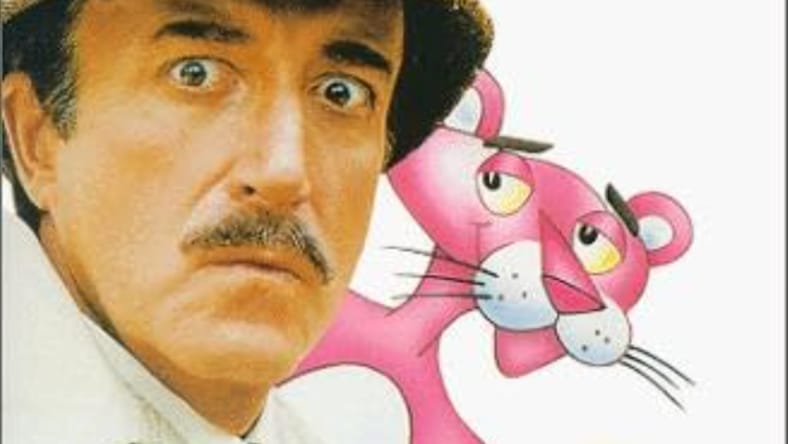
If you have just a casual knowledge of the Pink Panther series, you probably know that it followed the bumbling Inspector Closeau, played by Peter Sellers, through a series of comedic misadventures. What you may not realize how long writer-director Blake Edwards managed to drag out the series even after Sellers’ death in 1980.
In the latest episode of The Industry podcast, host Dan Delgado lays out the weird, dubious and lawsuit-inspiring ways Edwards tried to keep the series going without its beloved star. It is presented by SoCreate, and you can listen on Apple or Spotify or here:
Even if you’ve never seen a Pink Panther movie, you surely know Henry Mancini’s swanky theme song for the series, or may have seen the Saturday morning cartoon series The Pink Panther, featuring the lanky, unflappable cat often featured in credit sequences for the live action films.
Some Pink Panther Background
After Sellers’ death, Edwards mounted an ambitious plan to continue the series — which had started with 1963’s The Pink Panther. Non-fans may be surprised to learn that Sellers was not the lead character in the first film, which focused on the Phantom/Sir Charles Lytton, played by David Niven. But Sellers, a year away from his performance in Stanley Kubrick’s Dr. Strangelove, stole the movie out from under Niven the way a thief might steal the Pink Panther diamond that gives the series its name. (It contains a barely perceptible flaw that resembles a panther.)
Sellers was front and center starting with the 1964 follow-up A Shot in the Dark, and in 1968’s Inspector Closeau, in which Bud Yorkin took over directing duties from Edwards.
Also Read: With The Holdovers, Alexander Payne Makes His 1970s Movie
But Edwards and Sellers reunited in 1975 for The Return of the Pink Panther, as both found their careers in a spot of trouble, and sought the comfort of a familiar franchise. The film was a hit, as was 1976’s The Pink Panther Strikes Again. Edwards initially wanted the film to be three hours long, but distributor UA demanded it be cut; the final version was just 103 minutes.
By now, Edwards and Sellers, who had always clashed, were often at odds.
Edwards wanted to make 1978’s Revenge of the Pink Panther entirely from the cut footage from The Pink Panther Strikes Again, an idea Sellers rejected. So they went to work again, for what would be the last time (except for a scene in Edwards’ 1979 film 10 that was ultimately cut.)
You might think Sellers’ death in 1980 would mean the end of the franchise, but no — it was only two-thirds of the way through. And that’s not including the Steve Martin reboot, or a planned upcoming reboot for which Eddie Murphy is in talks.
As Delgado recounts in The Industry, Edwards finally got to use his lost The Pink Panther Strikes Again footage in 1982’s Trail of the Pink Panther, intended as an homage and goodbye to Sellers.
But Sellers’ widow, Lynne Frederick, saw it instead as an insulting cash in, built from footage her husband hadn’t wanted used in Revenge of the Pink Panther. She sued, and was awarded $1 million in damages.
But she wasn’t granted an injunction to prevent further showings of the film. Forunately for her, it has been forgotten largely on its own merits — it was a critical and box office failure, as were two further attempts, under Edwards’ watch, to continue the original franchise.
Dan Delgado lays out the whole story in riveting, amusing detail, and also recounts promising but ultimately failed attempts to revive the Pink Panther in a CBS sitcom. If you like the episode, we highly recommend subscribing to The Industry, visiting its website, and leaving it a good review on the podcasting platform of your choice.
Main image: A promotional image of Peter Sellers and the Pink Panther for 1975’s Return of the Pink Panther.
Share:

